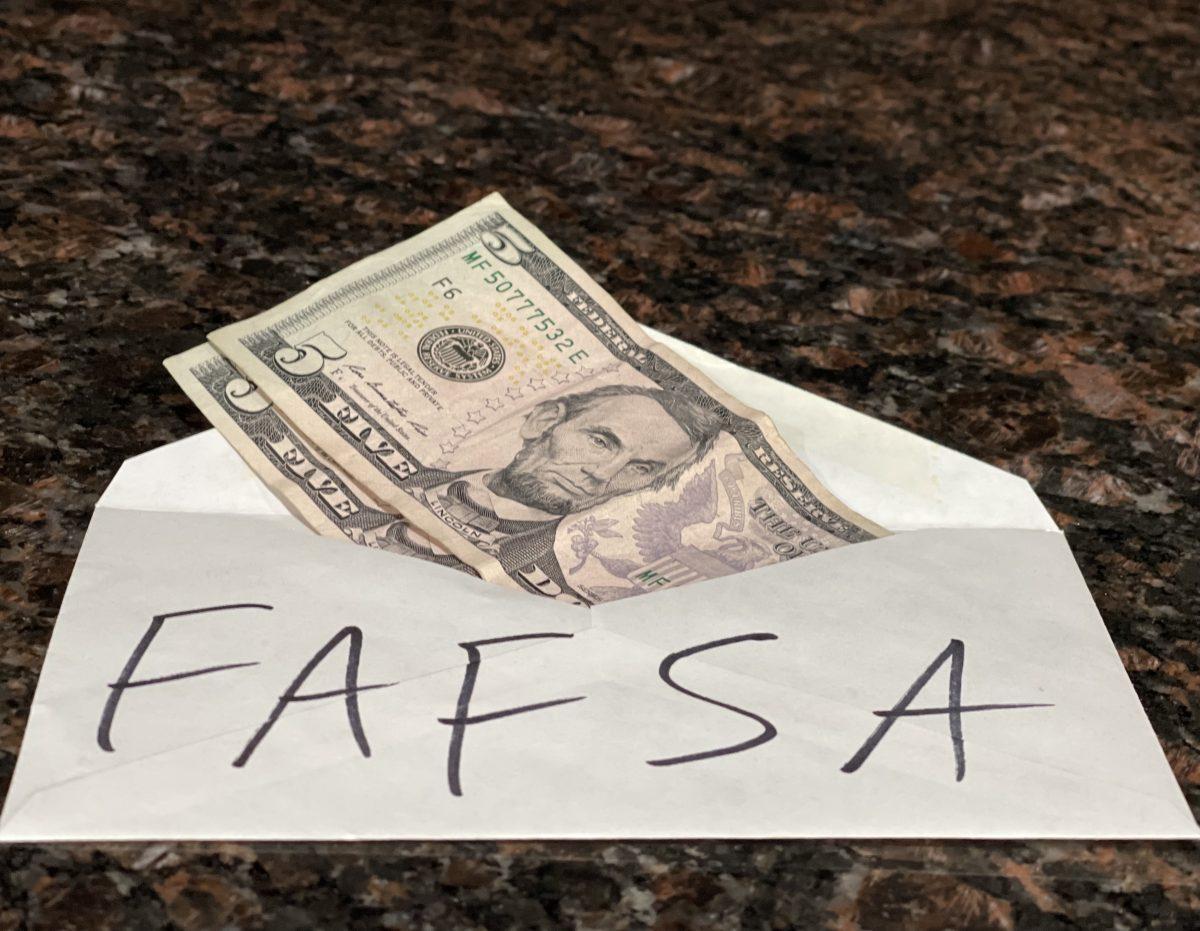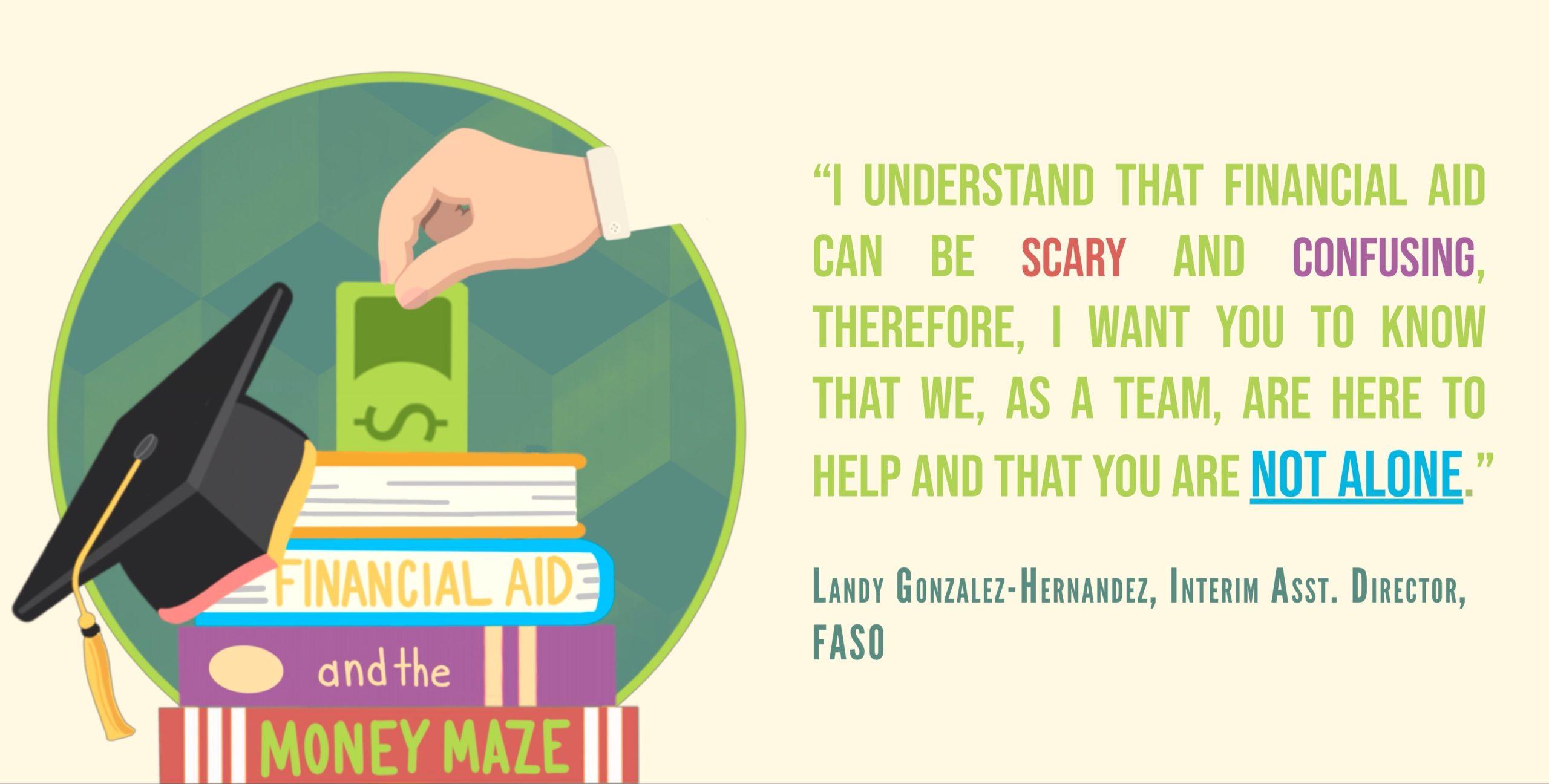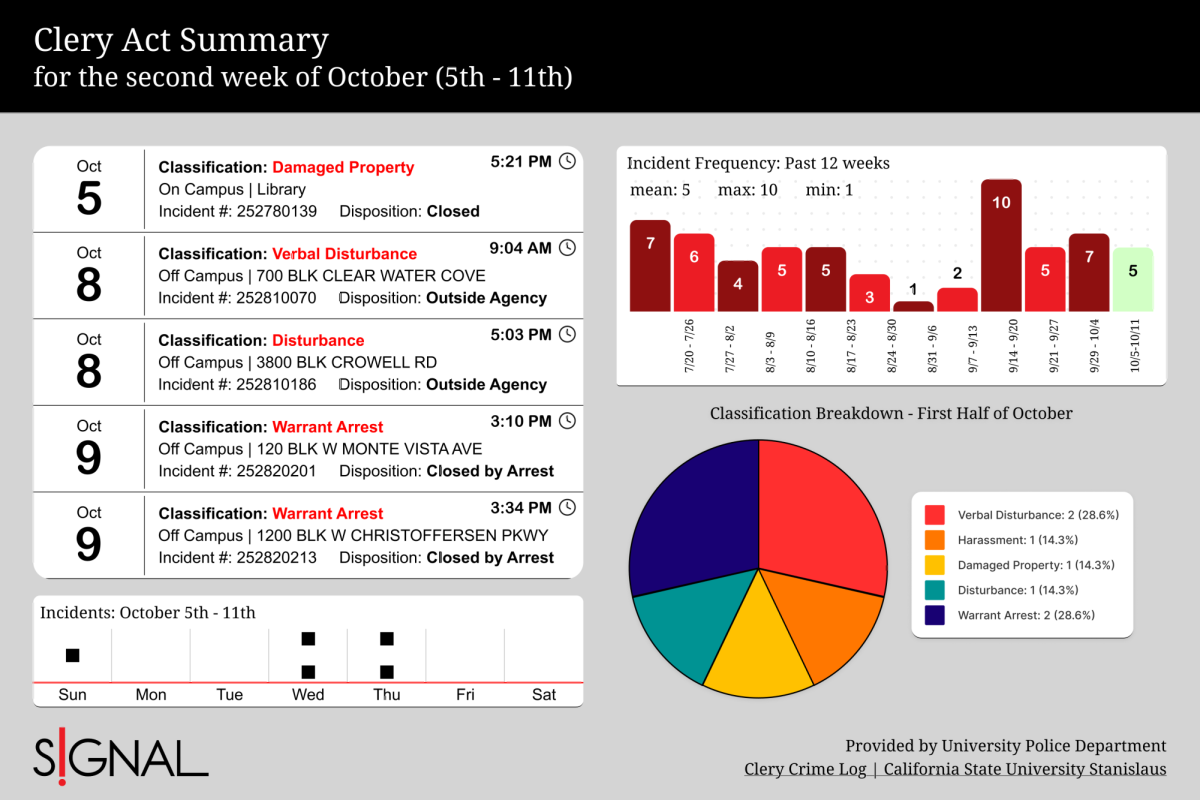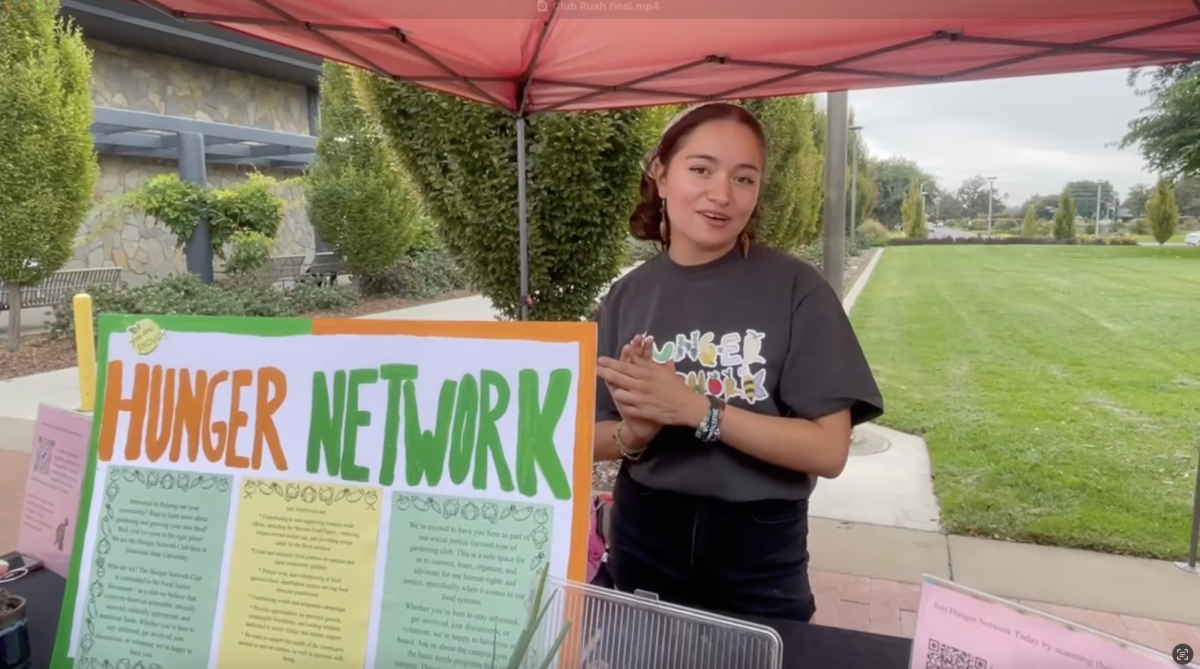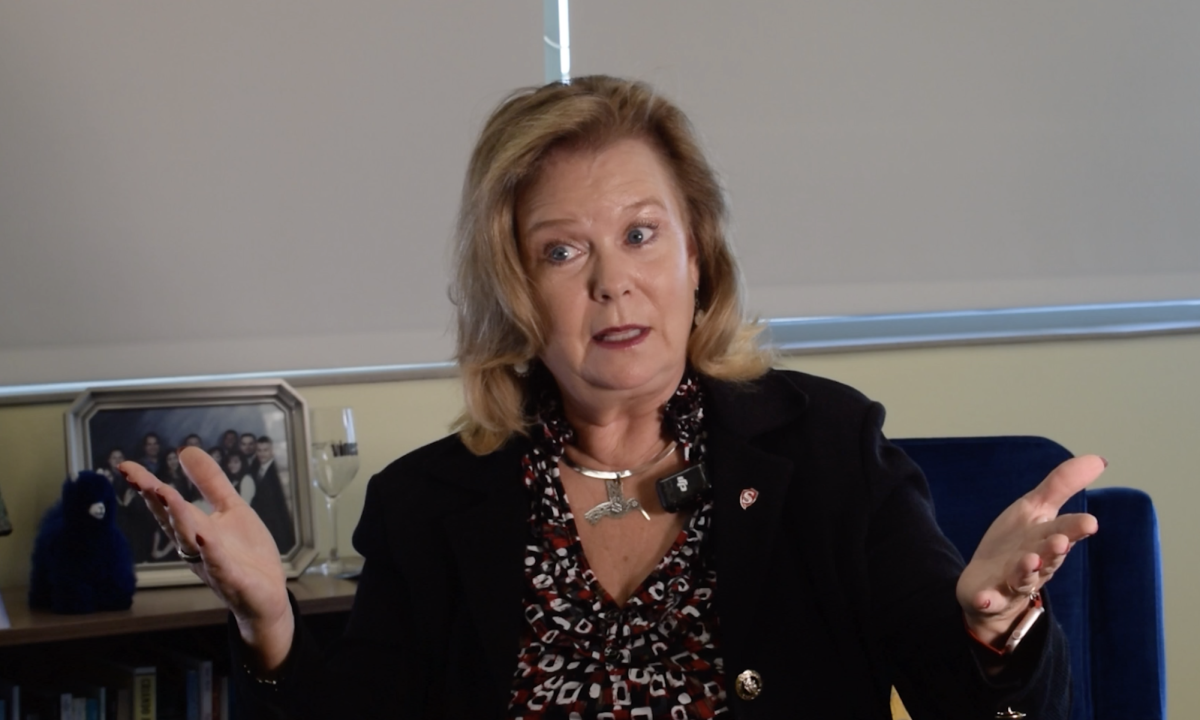“I understand that Financial Aid can be scary and confusing, therefore, I want you to know that we, as a team, are here to help and that you are not alone. If you need help understanding how to fill out a document, questions when filling out the FAFSA or CADAA applications, or understanding the award letter, please do not hesitate to reach out! But in the meantime, I hope this series, Financial Aid and the Money Maze, gives you the opportunity to find out about the services we offer, the ways you can contact us, and, most importantly, that we are here for you.”
– Landy Gonzalez-Hernandez, Interim. Assistant Director for the Financial Aid and Scholarship Office (FASO)
This article will be the last in our Financial Aid and The Money Maze series. With that being said, no series on financial aid could ever be truly complete without discussing the FAFSA application, often considered the cornerstone of every financial aid office.
For those who haven’t filled out a FAFSA yet, here are some of the basics in a video series produced by the Stan State Financial Aid Office. The deadline to submit the FAFSA application is March 2, but the Financial Aid Office recommends that students submit the completed application as soon as possible to allow time for processing.
Filling out the FAFSA application itself is not enough to immediately qualify for federal financial aid. Students must first receive their SAR, or student aid report. If a student’s EFC, or Expected Family Contribution listed on the SAR is near 0, then that student is eligible for full financial aid.
However, once a student is cleared for eligibility, it is up to the financial aid office at your university to determine whether you can receive financial aid for a particular term.
“For most types of federal financial aid, the Department of Education requires that students be enrolled at least half time, six or more units per term,” said Christina Goodeill, Financial Aid Advisor for the Financial Aid and Scholarship Office.
This also means that if are looking to receive full financial aid for a semester, you must be enrolled in 12 or more units, which is considered “full time” enrollment by the university.
These restrictions also apply to other types of federal financial aid, such as loans, which are also an option if you find yourself unable to qualify for enough other aid to pay your college expenses.
Loans primarily come in two main types, unsubsidized loans, which accrue interest, and subsidize loans, which do not.
If you find yourself worrying about repaying loans you took out in previous years, don’t. Due to Covid-19, the date for loan repayment has been extended to January 31, 2022.
“The pause includes a suspension of loan payments so if you have outstanding loans and were normally making payments on them, they have put those on hold and no interest is being charged,” said Goodeill.
If you have any questions about your loans, it’s best to contact your loan servicer, not the Financial Aid Office.
“Our office does not oversee loan repayment. The loans are dispersed through us, but once the loans disburse, the student’s loan servicer takes over and the loan servicer is the organization appointed by the Department of Education to keep track of those student loans,” Goodeill said.
It’s also important to be aware of how changes in enrollment can affect your financial aid. Students are especially concerned about this. One student, who asked to remain anonymous for this article, explained that due to unforeseen circumstances, they had to withdraw from a class, which lowered their enrollment for that semester.
“Once I withdrew from the class, I found that my financial aid was reduced and I owed almost $2000,” they said.
This student is referring to a financial aid policy where if a student drops from a class, the Financial Aid Office will reduce the amount of financial aid awarded for that semester, requiring the student to pay back the balance. However, this only occurs before
“Census Date,” which is the last day that students can add and drop classes without a late add/drop form and normally comes around about one month after the beginning of the semester. After census date, enrollment is frozen and financial aid can no longer be adjusted.
The financial aid office finds that the biggest issue they have is that students are unaware of how dropping a class before census date will affect their financial aid.
According to Gonzalez-Hernandez, “many students will contact us after census date when they notice they have an outstanding balance due on their account.”
“Any drops or adds before Census will be reflected in financial aid,” added Goodeill.
Dropping classes may also affect your scholarships, particularly the ones that require full-time enrollment, so that is another factor to consider.
While the Financial Aid Office is not advocating that you avoid dropping classes altogether, they are cautioning that it is best to do it at least two weeks before census date and to be aware of the impact it will have on your financial aid.
“If you are going to add or drop classes, the sooner you do so the better,” Gonzalez-Hernandez explained.
And if you are attempting to add into a class, the same rules apply there, too.
“Many professors are reticent to add a student close to census date, so be sure to add sooner in the semester,” says the anonymous student. “That is something I wish someone had told me,” they added.
As far as disbursement dates are concerned, the winter term is a nonstandard term, so no financial aid of any kind (loans included) will be dispersed for the winter turn. However, for spring, disbursements will begin starting January 13, approximately 10 days before the start of the semester.
Because there is so much aid available to students in the form of loans, scholarships, state grants, and federal financial aid, sometimes all this aid can exceed a student’s “expected cost of attendance.”
When this happens, the university must, by law, work to reduce this over reward so that a student is not given more money than their cost of attendance.
“Basically what it comes down to is the total sum of the students financial aid, whether it be loans, grants, scholarships, work study, etc., cannot exceed their estimated cost of attendance,” said Katrin Shahbaz, Scholarship Coordinator for the Financial Aid and Scholarship Office.
Once the unmet need of a student is determined, Shahbz said, “we start awarding scholarships, grants, loans.”
What is important to note is the way that all this aid interacts when a student’s aid does exceed this limit.
“So let’s say a student is close to the cost of attendance and they get a external scholarship. What we do is award that and what that does is reduces their loans first,” Shahbaz explained.
Unsubsidized loans are reduced first, followed by the subsidized loans. After all the loans have been reduced, work-study payments will be reduced next, followed by California State grants and university grants.
Interestingly, once all the loans, California grants, university grants and work–study have been reduced to zero, it is possible for students to still receive more money than their cost of attendance. This mainly has to do with the Federal Pell Grant and scholarships, which, according to the Financial Aid and Scholarship Office, can never be reduced.
“So what ends up happening is that students are left with just their federal Pell Grant and any scholarships that they receive,” said Gonzalez-Hernandez.
Throughout this series we have tried to make financial aid a little less intimidating and provide a little more insight into how it works. We hope you’ve enjoyed this short series and thank you for taking the time to read Financial Aid and The Money Maze!

